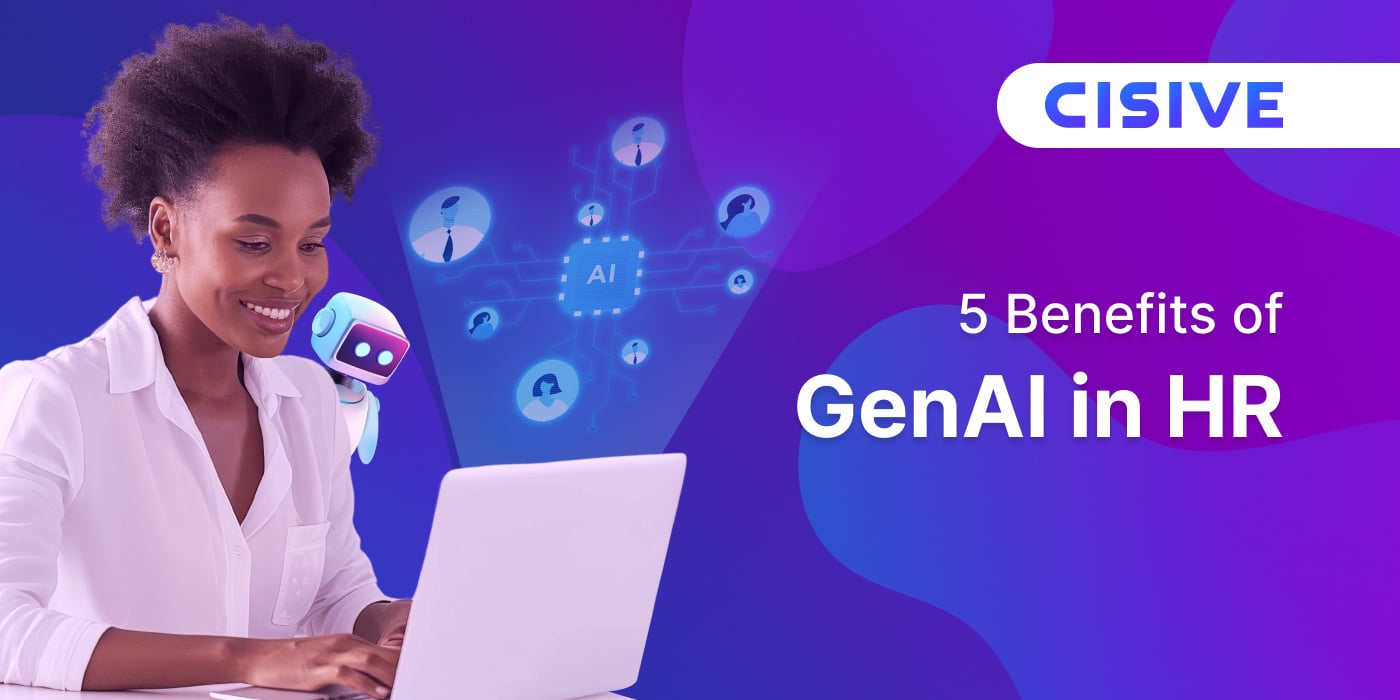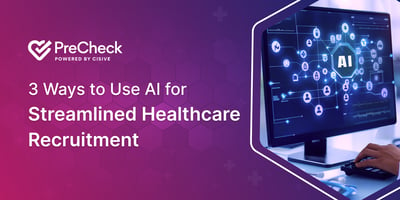

As an HR leader in healthcare, you’re constantly juggling the urgent need to fill critical...

Generative AI isn’t just a buzzword; it’s a game-changer poised to revolutionize HR. Ignoring this transformation means risking falling behind in the race for top talent and operational efficiency. As with nearly every other function of business, generative AI will transform HR — and you still have time to adapt now to help lead the revolution in your organization.
Understanding the impact and benefits of AI on HR should be a priority for all HR professionals. Generative AI (genAI) can make HR’s work 30% more efficient, according to research from the Boston Consulting Group. The biggest gains come from improving hiring processes and automating HR admin tasks, but genAI is projected to drive productivity across the HR value chain, from strategic planning to employee experience.
Take a look at how genAI will transform HR as we know it, and how it can free up your team to focus on the more human side of human resources.
Generative AI is a type of artificial intelligence that can generate new content, like text, images, or music, by learning from existing data. In HR, genAI can offer innovative solutions for complex problems and enhance various processes. For example, AI-powered chatbots can improve employee interactions with HR programs, automated tools can create HR messaging, and predictive analytics can aid in identifying skills gaps.
GenAI is unique because of its advanced capabilities. While traditional AI excels at automating routine tasks, genAI goes a step further by solving creative problems and generating new data. Unlike traditional AI, which follows set rules, genAI can learn and adapt, offering more flexible and creative solutions.
With genAI, create personalized employee experiences, and even predict future trends, allowing you to focus on strategic initiatives.

GenAI is transforming HR by offering innovative solutions to traditional challenges. From streamlining processes to enhancing employee experiences, genAI provides numerous benefits that can elevate HR functions. Let’s look at five key benefits of using genAI in your HR operations.
AI-powered tools make HR tasks like managing payroll, benefits, and compliance easier and more accurate. For instance, AI can handle complex payroll calculations and ensure compliance with changing regulations, freeing HR professionals to focus on strategic initiatives. AI-driven chatbots can also act as virtual assistants. They can handle common questions and give instant answers to employee questions about policies, benefits, and procedures.
GenAI improves talent management by offering advanced tools for your recruiting process, performance management, and succession planning. AI-powered systems can quickly analyze large amounts of data to find the best candidates, making hiring easier and faster.
Once hired, AI tools can streamline the onboarding process and continuously assess employee performance. These tools can prompt managers to give real-time feedback and development suggestions tailored to each employee’s needs, leading to better alignment of skills and roles within the organization.
Succession planning also benefits from AI's predictive capabilities, which identify potential leaders and map out career development paths to ensure a strong pipeline of future business leaders.
GenAI transforms the employee experience by providing personalized interactions and support. For example, during onboarding, AI-driven tools can deliver the information and training new hires need to adapt to their roles. Ongoing feedback systems powered by AI offer timely and constructive feedback, keeping employees engaged and motivated.
AI can also create personalized learning and development plans. It can identify skills employees may lack and suggest learning opportunities that match their individual career goals. This personalized approach fosters a more engaged and satisfied workforce, ultimately reducing turnover rates.
GenAI gives HR leaders data-driven insights, improving decision-making processes and leading to better outcomes. By analyzing historical data and identifying trends, AI technology provides actionable insights for strategic decisions.
For example, AI can predict employee turnover, allowing HR leaders to proactively implement retention strategies. Performance data analytics can identify high-performing employees and areas needing improvement, guiding decisions on promotions, training, and resource allocation. These insights help you make HR decisions based on accurate data, and deliver this information to those who need it most, from the boardroom to frontline managers.
GenAI’s predictive abilities hold a lot of potential for strategic planning. AI tools can forecast future workforce needs based on current trends and historical data, enabling HR to plan for changing people needs more effectively. This foresight helps in aligning your HR strategy with the business strategy, guaranteeing that you have the right people in the right places to achieve business goals.
Additionally, AI can simulate various scenarios, providing insights into potential outcomes and helping you make more informed strategic decisions. By leveraging AI in strategic planning, you can better anticipate both challenges and opportunities, positioning the organization for long-term success.

Integrating genAI into HR practices can yield significant benefits, but adding these tools safely and successfully requires careful planning and execution. Adopt the following best practices to make sure that your AI initiatives are effective, ethical, and aligned with organizational goals.
Protecting sensitive data is crucial when introducing genAI. Make sure that you use strong data encryption to keep employee information safe. Limit access to sensitive data so only authorized users can see it. Regularly update your data protection methods to comply with privacy regulations. By safeguarding data, you build trust with your employees and meet legal requirements, providing a secure environment for AI use.
AI tools run the risk of perpetuating human biases by repeating biased patterns, or by making decisions based on one-sided data sets. Regularly check and update your AI algorithms and data sets to make sure they reflect diverse backgrounds.
To reduce AI hiring bias, implement measures such as blind recruitment, where personal information like names and ages are removed from applications, to focus solely on qualifications and experience. Additionally, standardize interview questions to ensure all candidates are evaluated on the same criteria. Continuously monitor the AI’s decisions and outcomes to detect and correct any biases that may arise.
Training is key to getting the most out of genAI in HR. Offer comprehensive training programs for everyone involved, including HR professionals, managers, and other stakeholders. Provide ongoing training sessions and resources to keep everyone updated on the latest AI developments. Consider certification programs to formalize their knowledge. By equipping your team with the necessary skills, they can fully use AI tools to improve efficiency and innovation.
Set clear goals and metrics to measure the success of your genAI initiatives. Define specific, achievable goals that align with your organization’s needs. For example, aim to streamline the hiring process or improve employee satisfaction.
Develop key performance indicators (KPIs) to track progress toward your goals. Regularly review these metrics to assess the impact of AI tools and make data-driven adjustments. Clear goals and metrics provide a roadmap for your AI efforts, making sure they deliver real benefits.
Gathering feedback from managers and employees is a key step for improving your genAI use. Create easy ways for employees to share their experiences and suggestions. Encourage open communication to understand how AI tools are being used and their impact on daily tasks. Use this feedback to identify areas for improvement and make any necessary changes.
By listening to managers and employees, you can make sure AI solutions meet their needs and improve overall satisfaction and productivity.
The future of artificial intelligence in HR promises exciting advancements. Predictive analytics will become more accurate, helping you make better-informed decisions. Advanced machine learning models will provide deeper insights into employee behavior and trends. Globally, AI integration will continue to grow, offering new opportunities for innovation and efficiency for your HR teams.
As AI continues to evolve, so will its impact on HR roles and responsibilities. Strategic HR will become more critical, with AI-driven decision-making playing a significant role. HR professionals will need to develop new skills to work alongside AI technologies effectively — and to lean into AI to enhance your human touch.
Want to learn more about how Cisive is at the forefront in HR technology? Schedule a call with one of our background screening experts.